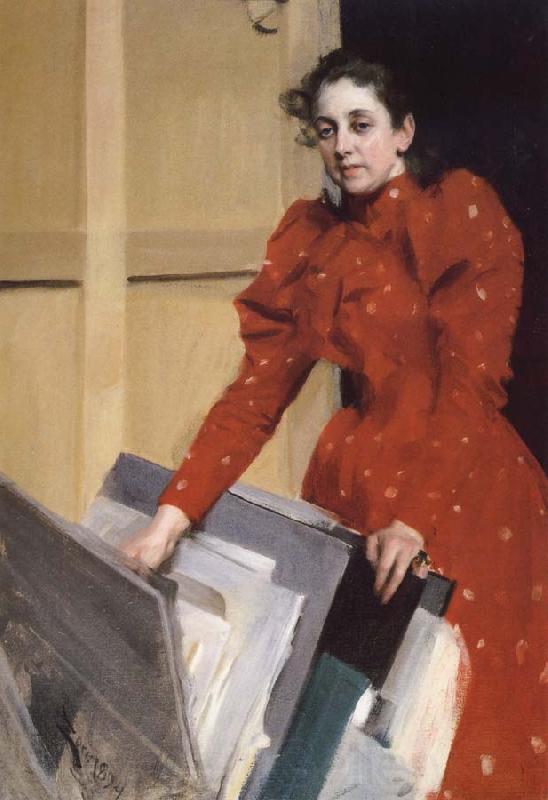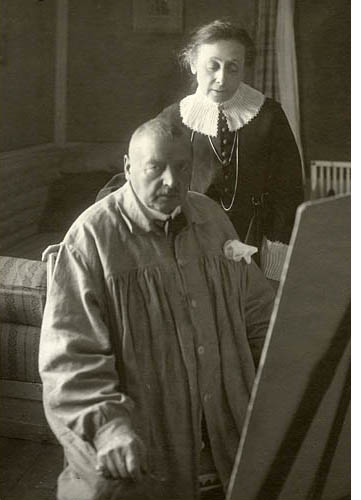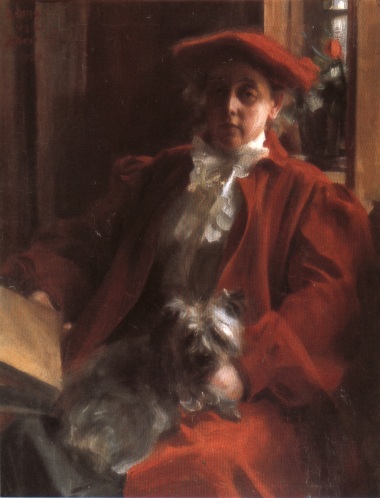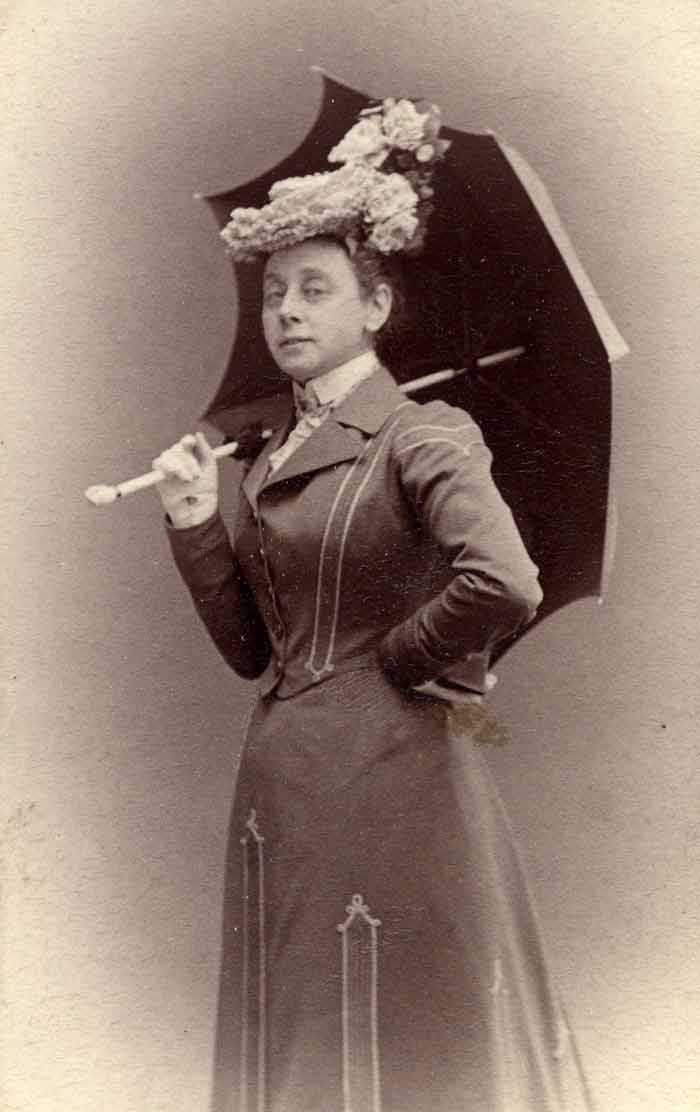The Famous Fine Artist and his Muse
The Famous Fine Artist and his Muse Emma Zorn.
Emma Zorn (née Lamm, 1860-1942) came from a well-to-do middle class Stockholm family. Her father, Martin Lamm, was a wholesale textile merchant and her mother, Henriette, had the maiden name of Meyerson. They had three children Herman, Anna and Emma.
The family, which was of Jewish descent, had very pronounced cultural interests and conducted an intense social life. There were many artists in their circle of friends and it was also through such an acquaintance that Emma met Anders Zorn who was of the same age. She happened to be babysitting for her nephew Nils when he was to be painted by Zorn in the winter of 1881. It turned out to be love at first sight.
In the summer of 1885 – when they had been secretly engaged for four years – Zorn managed to convince the Lamms that he was in a position to support Emma and himself from his work as an artist. On 2nd July they announced their engagement and on 18th October they got married in a civil ceremony.
Just before the marriage Emma together with her mother had visited Mora and also her future husband’s family. In spite of all the differences Emma became very fond of Zorn’s family. This positive meeting proved to have great significance for her. She was always to have very good relations with her in-laws and the people of Mora.

After a number of years with much travelling, including a honeymoon in Constantinople (Istanbul) where Zorn became seriously ill with typhoid fever, the Zorns finally settled in Paris in 1889. Here they set up their own home for the first time. Cooking had not featured in Emma’s upbringing and this aspect of everyday life therefore became a testing time for her. On the other hand she had well developed organisational ability. So it was she who came to be responsible for her husband’s contacts with exhibitors, museums, publishers and transport undertakings.
In 1896 the Zorns returned to Sweden. Their permanent address became Zorngården in Mora where there was always much social hustle and bustle. Amongst the friends who enjoyed their hospitality were Erik Axel Karlfeldt, Prince Eugene, Albert Engström, Bruno Liljefors as well as Carl and Karin Larsson. Now and again Emma would exclaim that it was nice that they had not had any guests “for three days”.
Even the inhabitants of Mora were included in the Zorns’ benevolence. Encouraged by her husband Emma became involved in a series of different local activities such as the peoples’ library and the handicraft association. The Zorn Childrens’ Home was indebted to her for its existence and likewise also Mora Adult Education Centre (folkhögskola) which came into being as a result of the active participation and financial support from her and her husband.
Up to the end of the eighteen nineties it would seem that the relationship between Emma and Anders was a happy one but thereafter frictions began to occur. Their married life then gradually became characterised by mutual dependence based on friendship rather than love.
After her husband’s death Emma’s life changed radically. It was now she who bore the responsibility for carrying forward the inheritance of the great master. It was her iniative that led to the establishment of the Zorn museum which was opened in 1939, just three years before her death
For her time Emma Zorn was a radical, outgoing and realistic woman. She detested falsity and flattery and there are many who bore witness to her intelligence, quick repartee and resounding laughter.





This Post Has 0 Comments